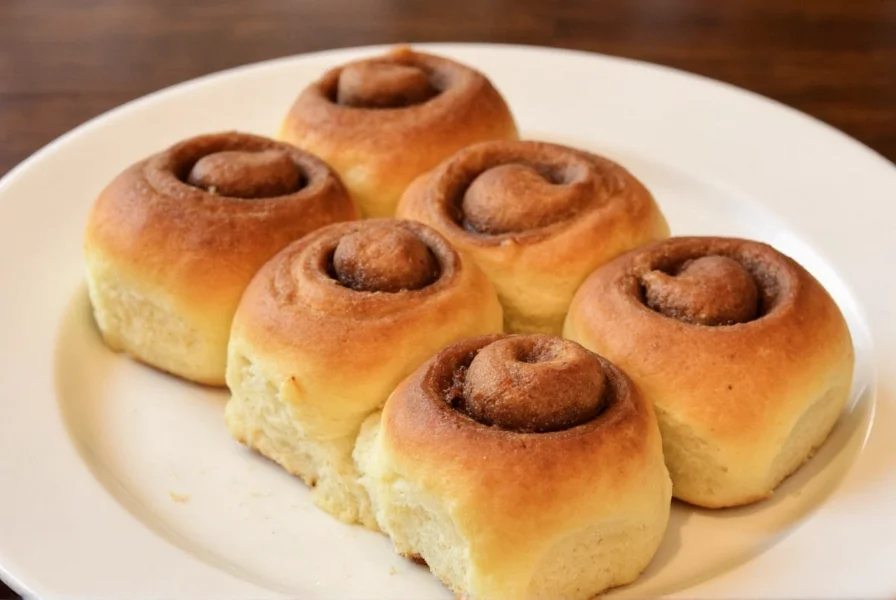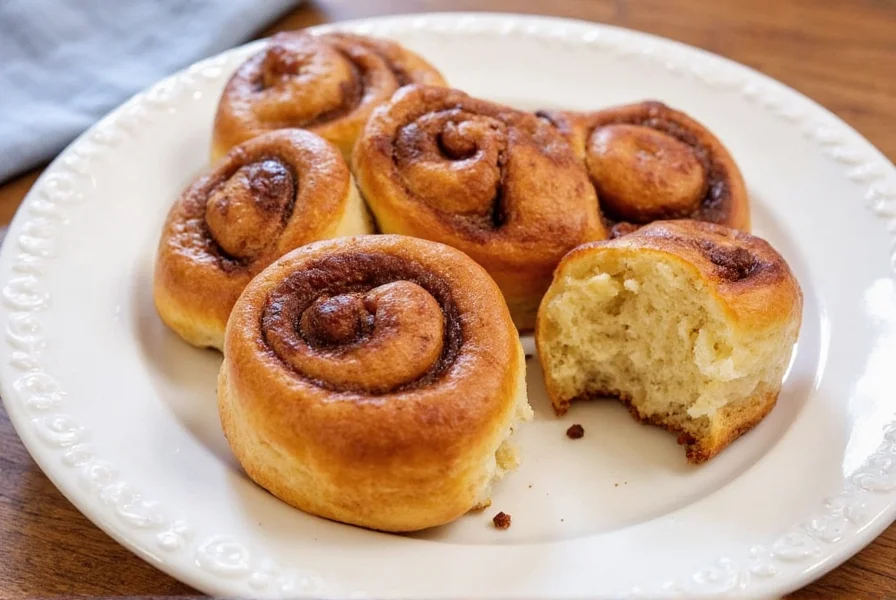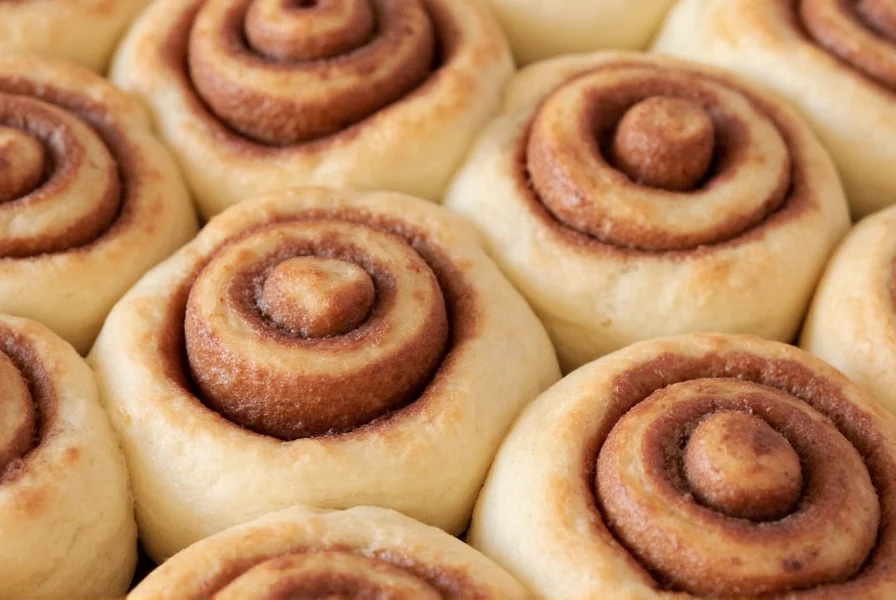The best way to make cinnamon rolls is by preparing a soft yeast dough, rolling it out, spreading a buttery cinnamon-sugar filling, then slicing and baking until golden. For perfect results, use fresh yeast, allow proper rising time (1-2 hours), and maintain dough temperature around 75-80°F (24-27°C). The ideal cinnamon to sugar ratio is 2 tablespoons cinnamon to 1 cup sugar for the filling, and a simple cream cheese or vanilla icing completes these classic breakfast treats.
Making perfect cinnamon rolls from scratch might seem intimidating, but with the right technique and attention to detail, you can create bakery-quality results at home. This comprehensive guide shares professional baking insights gathered from decades of perfecting this beloved pastry. Whether you're a beginner or experienced baker looking to refine your technique, these step-by-step instructions will help you achieve soft, fluffy cinnamon rolls with just the right amount of sweetness and that signature swirl.
Essential Ingredients for Perfect Cinnamon Rolls
Quality ingredients form the foundation of exceptional cinnamon rolls. While substitutions are possible, using these recommended ingredients will yield the best results:
| Ingredient | Amount | Professional Tip |
|---|---|---|
| All-purpose flour | 4½ cups (560g) | Spoon and level flour; don't pack it into measuring cups |
| Warm whole milk | 1 cup (240ml) | 110°F (43°C) - warm but not hot to the touch |
| Active dry yeast | 2¼ teaspoons (7g) | Fresh yeast yields better rise than expired packets |
| Granulated sugar | ⅓ cup (65g) | Plus 1 cup for filling |
| Unsalted butter | ½ cup (113g) | Softened for dough, melted for filling |
| Eggs | 2 large | Room temperature for even mixing |
| Ground cinnamon | 2 tablespoons | Ceylon cinnamon offers more complex flavor |
| Salt | 1½ teaspoons | Essential for flavor balance |

Equipment You'll Need
Having the right tools makes the process smoother and more consistent:
- Stand mixer with dough hook (hand mixing possible but more work)
- Rolling pin (wood or marble works best)
- 9x13 inch baking pan (glass or metal)
- Pastry brush for butter application
- Sharp serrated knife or unflavored dental floss for clean cuts
- Kitchen thermometer (critical for proper milk temperature)
- Plastic wrap or clean kitchen towel
Step-by-Step Cinnamon Roll Instructions
Dough Preparation (45 minutes + rising)
- Activate the yeast: Combine warm milk (110°F), 1 tablespoon sugar, and yeast in mixer bowl. Let sit 5-10 minutes until foamy.
- Mix wet ingredients: Add softened butter, eggs, and remaining sugar to yeast mixture. Mix on low until combined.
- Incorporate flour: Gradually add flour and salt while mixing on low speed. Increase to medium and knead 5-7 minutes until smooth and elastic.
- First rise: Place dough in greased bowl, cover, and let rise in warm spot (75-80°F) for 1-1.5 hours until doubled.
Filling and Shaping (20 minutes)
- Prepare filling: Mix 1 cup sugar and 2 tablespoons cinnamon. Melt ½ cup butter for spreading.
- Roll dough: Punch down risen dough and roll into 18x12 inch rectangle on floured surface.
- Apply filling: Brush melted butter evenly over dough, then sprinkle cinnamon-sugar mixture.
- Roll tightly: Starting from long edge, roll dough into log. Pinch seam to seal.
- Cut rolls: Using sharp knife or dental floss, cut into 12 equal pieces (about 1.5 inches each).
Baking and Finishing (30 minutes)
- Second rise: Place rolls in greased baking pan, cover, and let rise 30-45 minutes until puffy.
- Bake: Preheat oven to 350°F (175°C). Bake 22-28 minutes until golden brown and internal temperature reaches 190°F (88°C).
- Cool slightly: Let rolls cool 10 minutes before icing.
- Prepare icing: Mix 4 oz cream cheese, ¼ cup butter, 1 cup powdered sugar, 1 tsp vanilla, and 1-2 tbsp milk until smooth.
- Finish: Spread icing over warm rolls. Serve immediately for best texture.

Professional Tips for Perfect Cinnamon Rolls Every Time
After making thousands of cinnamon rolls, these expert insights will help you avoid common pitfalls:
- Temperature control is critical: Dough rises best at 75-80°F (24-27°C). Too cold = slow rise; too warm = kills yeast. Use your oven with just the light on as a perfect rising environment.
- Avoid over-flouring: Excess flour creates tough rolls. Add flour gradually until dough pulls away from bowl but remains slightly tacky.
- Cut with dental floss: For clean slices without squishing, slide unflavored dental floss under the roll, cross ends over top, and pull through.
- Don't overbake: Remove rolls when they reach 190°F internally - they'll continue cooking from residual heat.
- Timing matters: For morning baking, prepare rolls through second rise the night before, refrigerate, then let sit at room temperature 1 hour before baking.
Common Variations and Substitutions
While classic cinnamon rolls are perfect on their own, these tested variations add exciting twists:
- Gluten-free option: Substitute 1:1 gluten-free flour blend and add 1 teaspoon xanthan gum for structure.
- Vegan adaptation: Use plant-based milk, vegan butter, and replace eggs with flax eggs (1 tbsp ground flax + 3 tbsp water per egg).
- Flavor enhancements: Add orange zest to dough, nutmeg to filling, or chopped pecans between layers.
- Icing alternatives: Try brown butter cream cheese frosting or a simple powdered sugar glaze for different occasions.
- Mini cinnamon rolls: Cut dough into smaller pieces for bite-sized treats that bake in 15-18 minutes.
Storage and Reheating Guidelines
Proper storage maintains freshness and texture:
- Room temperature: Store covered at room temperature for up to 2 days (best texture)
- Refrigeration: Keep in airtight container for up to 5 days
- Freezing: Wrap individual rolls tightly and freeze for up to 3 months
- Reheating: Microwave 10-15 seconds or warm in 300°F oven for 5 minutes for best results
- Reviving stale rolls: Lightly spritz with water before reheating to restore moisture
Frequently Asked Questions
Why did my cinnamon rolls turn out tough?
Tough cinnamon rolls usually result from too much flour in the dough or over-kneading. Measure flour properly by spooning into measuring cups and leveling off - never scoop directly. The dough should be slightly tacky but not sticky. Over-kneading develops too much gluten, creating a chewy rather than tender texture.
Can I make cinnamon roll dough ahead of time?
Yes, you can prepare cinnamon roll dough through the first rise, then refrigerate overnight. After shaping, you can also refrigerate the rolls before the second rise. When ready to bake, let them come to room temperature for about 1 hour before baking. This slow fermentation actually enhances flavor development.
What's the ideal cinnamon to sugar ratio for filling?
The professional standard is 2 tablespoons of cinnamon to 1 cup of sugar. Using less cinnamon creates a milder flavor that many find more balanced, while traditional recipes often call for 3 tablespoons which can be overpowering. Ceylon cinnamon offers a more complex, less harsh flavor than common cassia cinnamon.
How do I prevent filling from leaking out during baking?
To minimize filling leakage, leave a ½ inch border along one long edge when spreading filling, and ensure you pinch the seam well after rolling. Cutting with dental floss rather than a knife creates cleaner edges that hold together better. Don't overfill the rolls - a thin, even layer works best for structural integrity.
Why didn't my dough rise properly?
Dough that doesn't rise typically indicates expired yeast, liquid that was too hot (killing yeast), or a cold environment. Always test yeast in warm liquid with a pinch of sugar first - it should foam within 5-10 minutes. Maintain a consistent warm environment (75-80°F) for rising, and never place dough near drafts or air conditioning vents.











 浙公网安备
33010002000092号
浙公网安备
33010002000092号 浙B2-20120091-4
浙B2-20120091-4